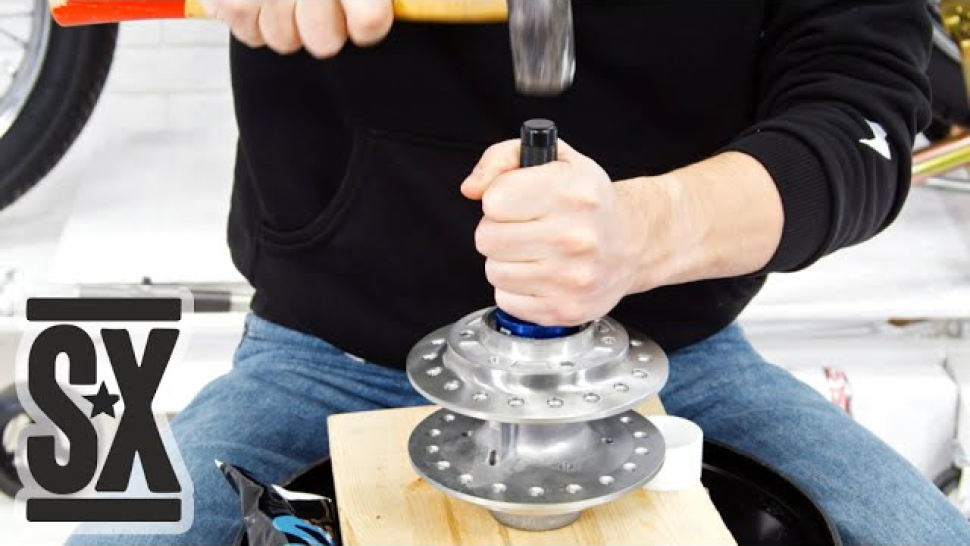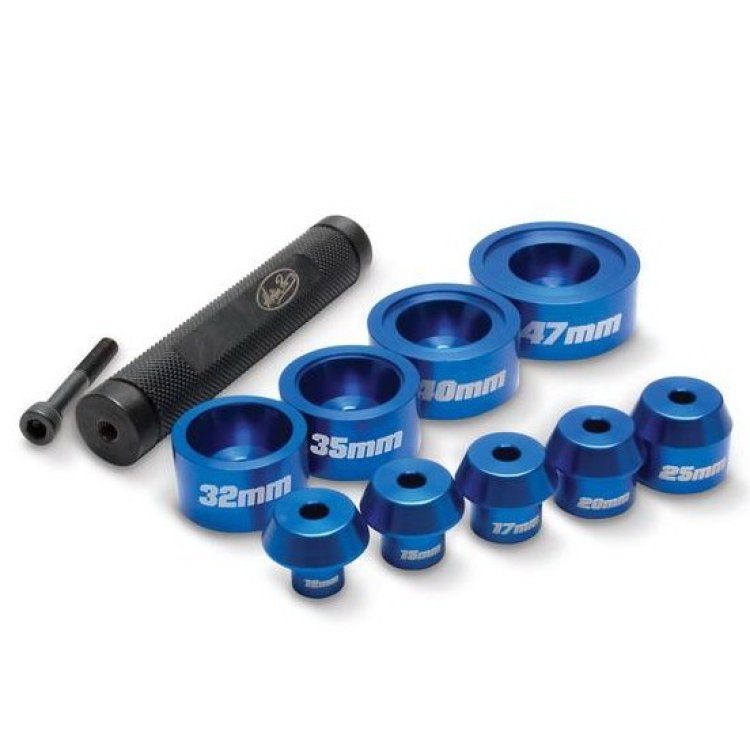Wheel Bearing Installation
The 43 mm Kayaba adjustable fork is already set, now it's time for the front wheel. Triumph Binneville T100 has a 19-inch wheel, but for a cafe racer, we need a 17-inch wheel with wider tires (120/70). Smaller wheel diameter requires less effort when turning the handlebar to go into a slope, this is important for a sporty ride with fast maneuvers. A wider wheel has a larger contact area in the slope due to the larger radius of the profile. A 17-inch wheel can be bought ready-made, for example, Kineo, or assembled by yourselves with a new rim and spokes. Kineo wheels were very expensive and a little bigger than we wanted, so we decided to assemble them ourselves.
The German company LSL produces a ready-made kit with an ax and spacers for the standard Triumph Bonneville hub. The kit also includes an adapter for the caliper. To get the wheel that we wanted, we needed to put new spokes and rim on the hub. The drawback of it was that the wheel would be for one brake disc, so some unused caliper fasteners would remain on the right-hand fork jar, which would look ugly. Ideally, we would have to disassemble the fork, cut off the caliper mounts on the right jar and re-paint both jars. Not easy!
We decided to put a hub from Yamaha SR500/XS650 for two brake discs. In this case, there would be two disks, two calipers, and we would not need to modify the fork jars. But there were many problems with installing the hub. The LSL kit for the original Triumph hub didn't fit completely, so here is what had to be done:
- LSL kit bearings were suitable, but the spacing tube wasn't. We ordered an original tube from SR500 to get the exact dimensions. The tube is made of aluminum B95T.
- We had to get bearing filler blocks.
- The side spacers needed to be shortened (the short one by 2 mm, the long one by 8 mm) and the outer diameter had to be reduced (short to 28 mm, long to 45 mm).
- For brake discs, spacers had to be made. In our case, 7 mm for ABM calipers.
- Rims and spokes had to be ordered specifically for the SR500 hub.
Bearings pressing is not very difficult - you can do this with any tools, the main thing is to get the bearing go into the outer ring, without touching the inner one. To make this process easier, the outer ring and the seat can be greased. If you heat the hub or cool the bearing, it will easily go in, but there are no such recommendations in the manuals. We do not know why, but based on our own experience, we understood that if you heat up a broken wheel, it will get very “weak” and will bend in the future. Perhaps this hub is made of aluminum alloy, the structure of which is ruined during heating and therefore weakens. If there is no exact understanding of the process, it is better to do everything according to the manual!
So, neither of the options can be called ideal: there are problems in each of them. We decided to install a hub from the SR500 also because two brake discs are better from an operational point of view, and there are not so many projects in the world with two discs. The hub of the SR500 is also good because it has a relatively small outer diameter and slightly covers the “empty” area of the wheel, which looks nice.




